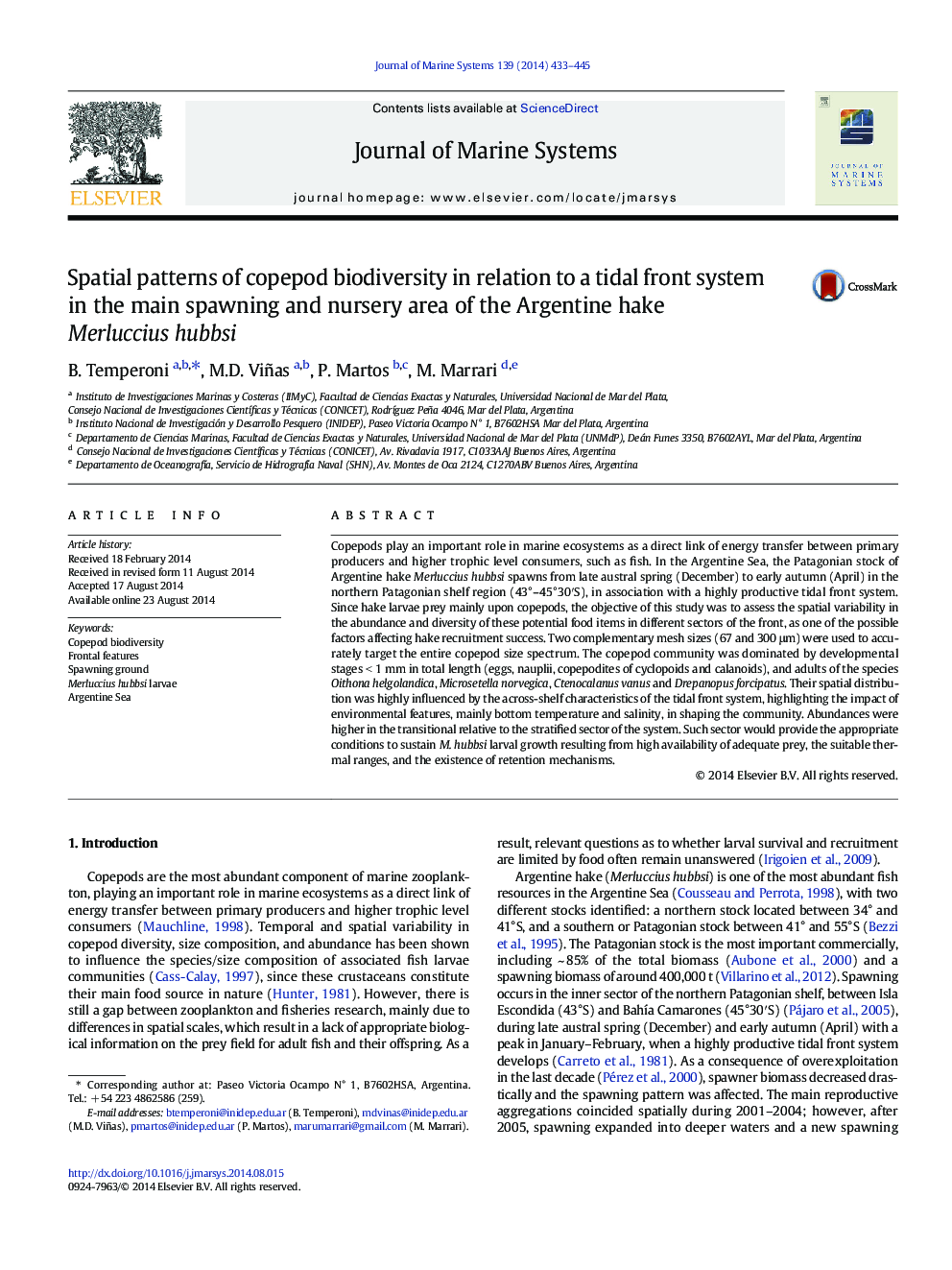| کد مقاله | کد نشریه | سال انتشار | مقاله انگلیسی | نسخه تمام متن |
|---|---|---|---|---|
| 6386974 | 1627290 | 2014 | 13 صفحه PDF | دانلود رایگان |

- The northern Patagonian shelf is a key spawning and nursery area for Argentine hake.
- Spatial variability of copepods during hake spawning season was assessed.
- Immature < 1 mm stages, Clausocalanids, O. helgolandica and M. norvegica dominated.
- Their distribution was influenced by the across-shelf pattern of a tidal front.
- Transitional sector provides optimal prey abundances for hake larvae development.
Copepods play an important role in marine ecosystems as a direct link of energy transfer between primary producers and higher trophic level consumers, such as fish. In the Argentine Sea, the Patagonian stock of Argentine hake Merluccius hubbsi spawns from late austral spring (December) to early autumn (April) in the northern Patagonian shelf region (43°-45°30â²S), in association with a highly productive tidal front system. Since hake larvae prey mainly upon copepods, the objective of this study was to assess the spatial variability in the abundance and diversity of these potential food items in different sectors of the front, as one of the possible factors affecting hake recruitment success. Two complementary mesh sizes (67 and 300 μm) were used to accurately target the entire copepod size spectrum. The copepod community was dominated by developmental stages < 1 mm in total length (eggs, nauplii, copepodites of cyclopoids and calanoids), and adults of the species Oithona helgolandica, Microsetella norvegica, Ctenocalanus vanus and Drepanopus forcipatus. Their spatial distribution was highly influenced by the across-shelf characteristics of the tidal front system, highlighting the impact of environmental features, mainly bottom temperature and salinity, in shaping the community. Abundances were higher in the transitional relative to the stratified sector of the system. Such sector would provide the appropriate conditions to sustain M. hubbsi larval growth resulting from high availability of adequate prey, the suitable thermal ranges, and the existence of retention mechanisms.
Journal: Journal of Marine Systems - Volume 139, November 2014, Pages 433-445